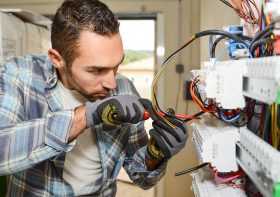How to make money from plastic waste that you recycle

Now, however, a number of technologies have evolved that enable people to recycle plastic waste directly through 3D printing and at a fractional cost. From millions of free designs, people are making their decorations and gifts. They also use recycled plastic for home and garden items, shoes and accessories, toys and games, and sporting goods. This method is known as distributed recycling and additive manufacturing (DRAM).
I am a professor in materials engineering who is at the cutting edge of this technology. I can tell you what this trend is and give you some ideas on how to benefit from it.
What is DRAM?
The method begins with plastic waste, including everything from broken or used products to packaging.
The DRAM flow chart – from trash to treasure. Joshua M. Pearce, CC BY
First, wash and sort the plastic using soap and water. You can even put it in the dishwasher. The plastic must then be crushed into small particles. A cross-cut CD/paper shredder will work for small amounts. Online, you can find plans to create an industrial waste plastics granulator for larger quantities.
You have several options. You can turn the plastic particles into 3D filament using a recyclingbot. This device spins the ground plastic into spaghetti-like filaments that are used by many low-cost 3D Printers.
The recyclebot is made up largely of 3D-printed parts.
The filament made by a recyclebot costs less than a penny per pound, compared to commercially produced filament that can cost up to US$10 or more per pound. Making products from waste at home is more appealing now that the pandemic has disrupted global supply chains.
This second method is more recent: you can 3D-print waste plastic directly from granulated waste using fused particle technology. This method is best suited to larger products and printers like the open-source commercial GigabotX, but it can also be used with desktop printers.
The syringe can be used to print granulated plastic waste, but this method is less common because the volume of the prints is limited due to the need to refill the syringe.
Together with dozens of labs and companies around the world, my research group has developed an array of open-source products that enable DRAM. These include shredders (also known as recyclebots), fused filament 3D printers, and fused particles 3D printers.
The devices are compatible with a wide range of plastics, including PET bottles. Now, any plastic waste that has a recycling icon on it can be turned into useful products.
An “ecoprinting initiative” in Australia demonstrated that DRAM could work in remote communities without recycling or power using solar-powered systems. DRAM is therefore applicable wherever humans are present, where waste plastic is plentiful and the sun shines – which is almost everywhere.
Circular economy: a step forward
This approach to recycling and manufacturing is not only more environmentally friendly but also highly profit-generating for individuals who make their products as well as small and medium businesses. You can save money by making your products using open-source designs.
From waste to filament to a tripod for a camera. Joshua M. Pearce, CC BY
DRAM enables custom products to be made for lower than the sales taxes on conventional consumer goods. There are already millions of 3D printable designs available for free. Everything from educational aids to household items and adaptive devices for people living with arthritis. These products are 3D printed by consumers, saving them millions of dollars.
In 2017, MyMiniFactory customers saved $4 million by making their toys instead of buying them. A desktop 3D Printer costs around US$250, and consumers can earn a Return on Investment of more than 100% when they make their products. If they use recycled materials, the return on investment is higher. For example, if you use a recyclebot to print 300 lens hoods on computer waste plastic for the same cost as one on Amazon.
3D printing can be profitable for individuals. There are thousands of people offering their services on markets such as Makexyz 3D hubs Ponoko and Print A Thing.
The Gigabot X is a 3D printer that can print larger objects. Samantha Snabes/re-3D CC by
Fab labs or small companies can buy industrial printers such as the GigabotX to make high profits by printing sporting goods from local waste.
Scaling up
Plastic manufacturers, who are large companies, recycle their waste. DRAM allows households to recycle their garbage. It would be beneficial for the environment if many people recycled their own plastic. DRAM can be used to create a circular economy. However, it won’t solve the plastic issue until more people use it. We are on the right track.
Amazon Basics now lists 3D filament along with “everyday” items, which shows that plastic-based 3D printing is becoming more mainstream. The majority of families do not own a 3D printer at home, even if it is a GigabotX or a recyclebot.
To make DRAM a viable option for the circular economy, larger tools must be housed in neighborhood enterprises, such as small businesses, makerspaces and fabrication labs. Schools could also be a good fit. France has already begun to study the creation of small businesses which would collect plastic waste from schools in order to create 3D filament.
I can remember collecting box tops for my elementary school. Future students can bring in leftover plastic (after making your own products) to fund their school using DRAM.




Leave a Reply